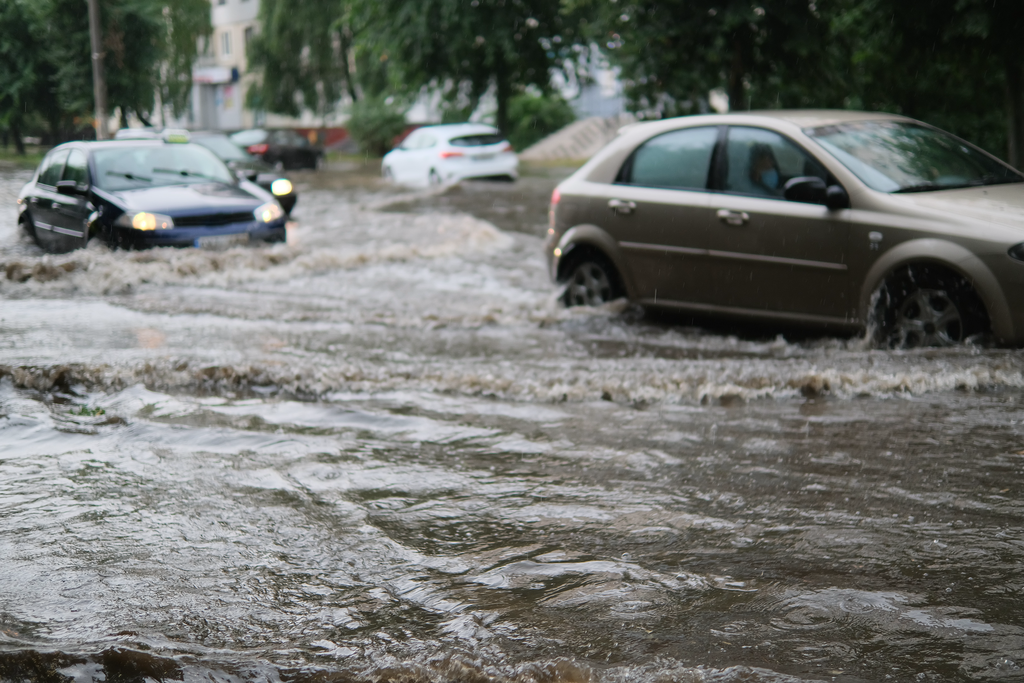Floods

Flooding affects Herefordshire and Worcestershire significantly, most recently in February 2014 when the River Severn topped its 2007 high. Both counties suffered a prolonged period of high rainfall and flooding affecting our rivers and road networks.
Hereford & Worcester Fire and Rescue Service provides rescue and relief during times of flooding, including the rescue of occupants in homes and vehicles stranded in flood water.
The Service has three Swift Water Rescue teams based at Worcester, Evesham and Hereford. There is a flood rescue capability based at Droitwich and the Service also hosts Urban Search and Rescue. The teams are complemented by inflatable boats and a range of equipment for rescuing people from mud and both fast moving and still water.
During flooding we advise you:
- Check in on vulnerable neighbours
- Follow the advice of emergency services if they tell you to evacuate – you will be taken to a centre run by the local council and provided with food and bedding
- If your home begins to flood, turn off your electricity supply, do not touch any sources of electricity when you are standing in flood water
- Do not try to drive through standing water
- Remain calm
For information on how to locate sandbags within your area, please see our sandbags guide.
Environment Agency warnings
The Environment Agency has three types of warning that will help you prepare for flooding and take action:
- Severe Flood Warning Severe flooding. Danger to life.
- Flood Warning Flooding is expected. Immediate action required.
- Flood Alert Flooding is possible. Be prepared.
Call Floodline on 0345 9881188 as well as 0845 9881188 to listen to recorded flood warning information for your area or speak to an operator for advice 24 hours a day.
Sign up for free flood warnings by telephone, text or email here
Read Environment Agency’s advice about what to do during flooding.
Roads during flooding
During a period of flooding, the road networks across Herefordshire and Worcestershire may be affected and the situation can change rapidly. Motorists are urged to check for road closures by checking official sources.
Road users should not drive through floodwater as the risk can be significant.
Safe use of water pumps during flooding
Business and home owners affected by flooding are urged not to use petrol or diesel water pumps in confined spaces. They can pose a significant safety risk and can lead to loss of life.
Petrol or diesel-fuelled generators used to power water pumps or other flood recovery devices are designed for outdoor use. They give off a variety of toxic gases including carbon monoxide fumes which can overcome people in the building or nearby areas if used in an enclosed space (e.g. a lounge).
We would urge people not to use them inside buildings or in areas without adequate ventilation.
Signs and symptoms of carbon monoxide exposure
The signs or symptoms of carbon monoxide exposure copy many common illnesses and can easily be confused with flu or simple tiredness.
- At low levels carbon monoxide exposure may cause poor concentration, memory and vision problems, and loss of muscle coordination. It can have an accumulative effect poisoning the individual over a period of hours or even days.
- At higher levels it may cause headaches, fatigue, vomiting and nausea.
- At very high levels, the symptoms intensify and it can prove fatal within a matter of hours.
As a precaution, the Service recommends the use of battery-powered carbon monoxide detectors. They look similar to smoke detectors and can be easily purchased and fitted by anyone. Read more about the dangers of carbon monoxide here.
If you would like further advice, please contact the Community Safety helpline on 0800 032 1155.